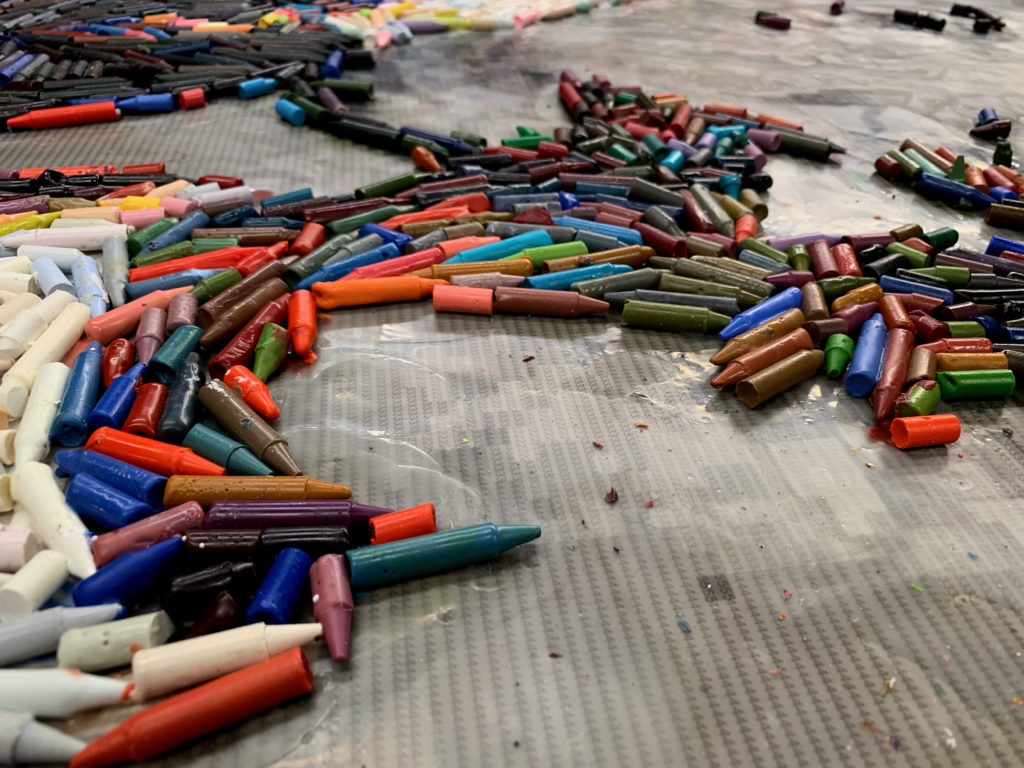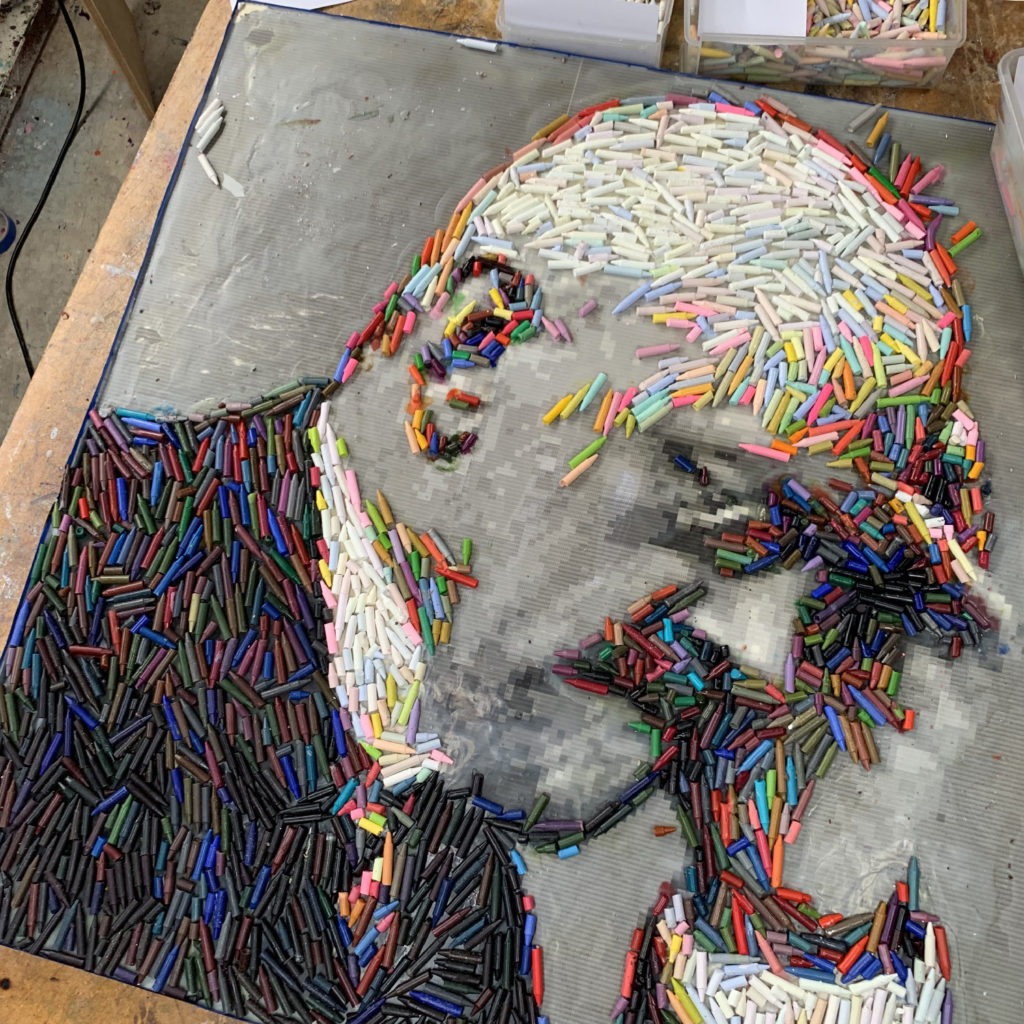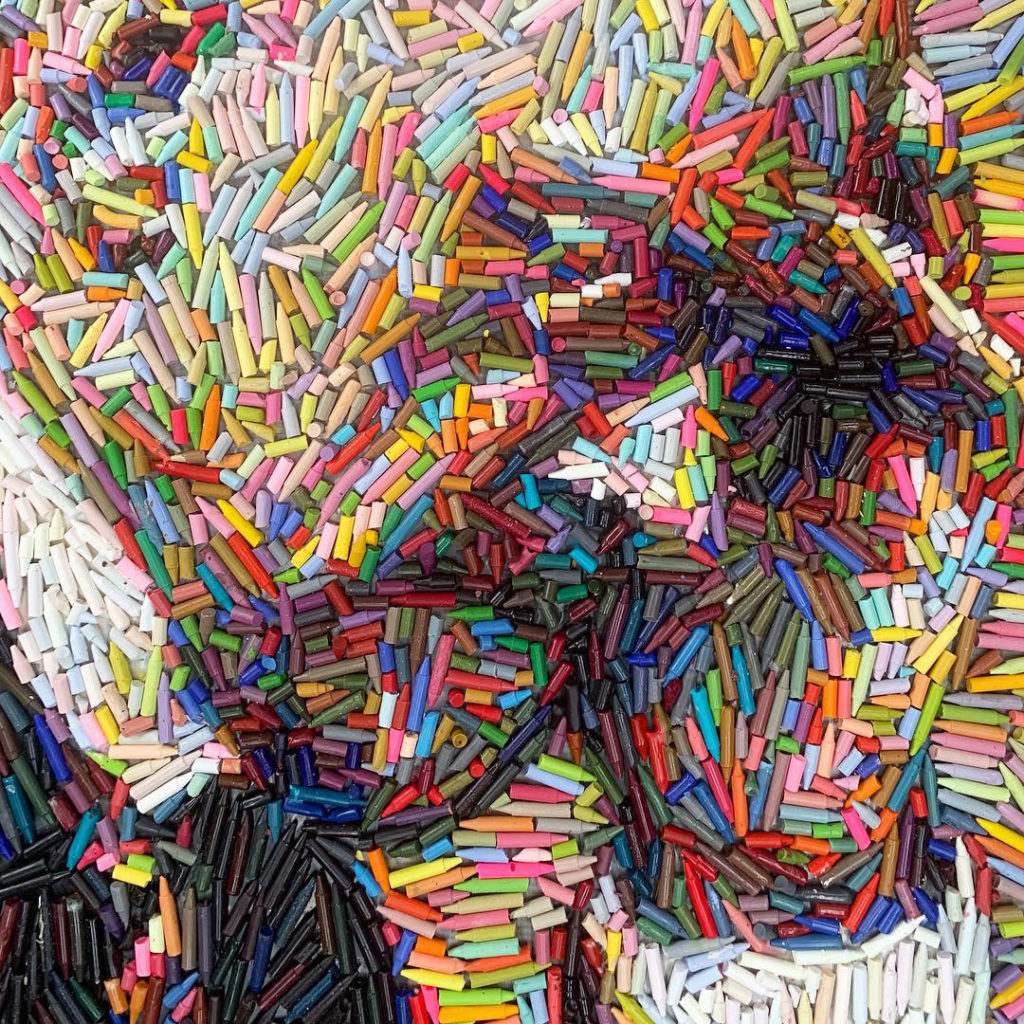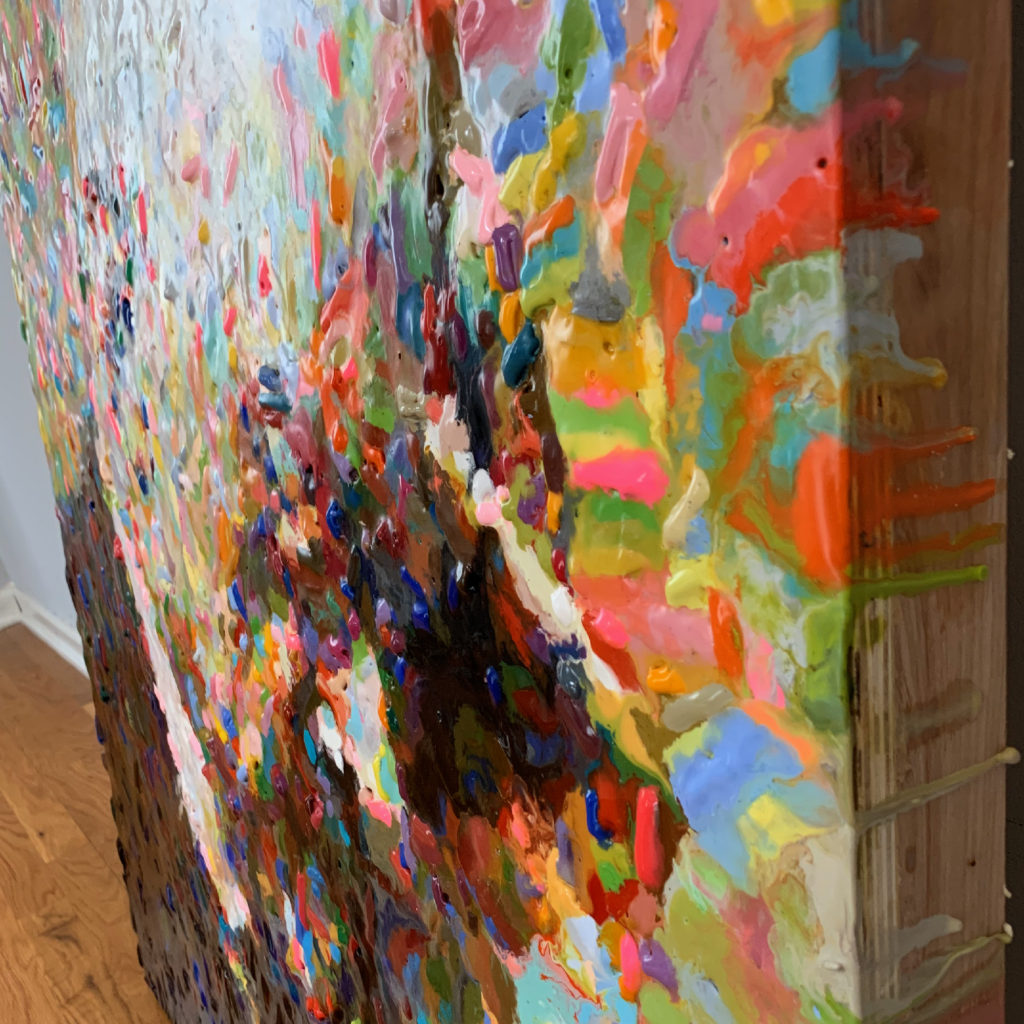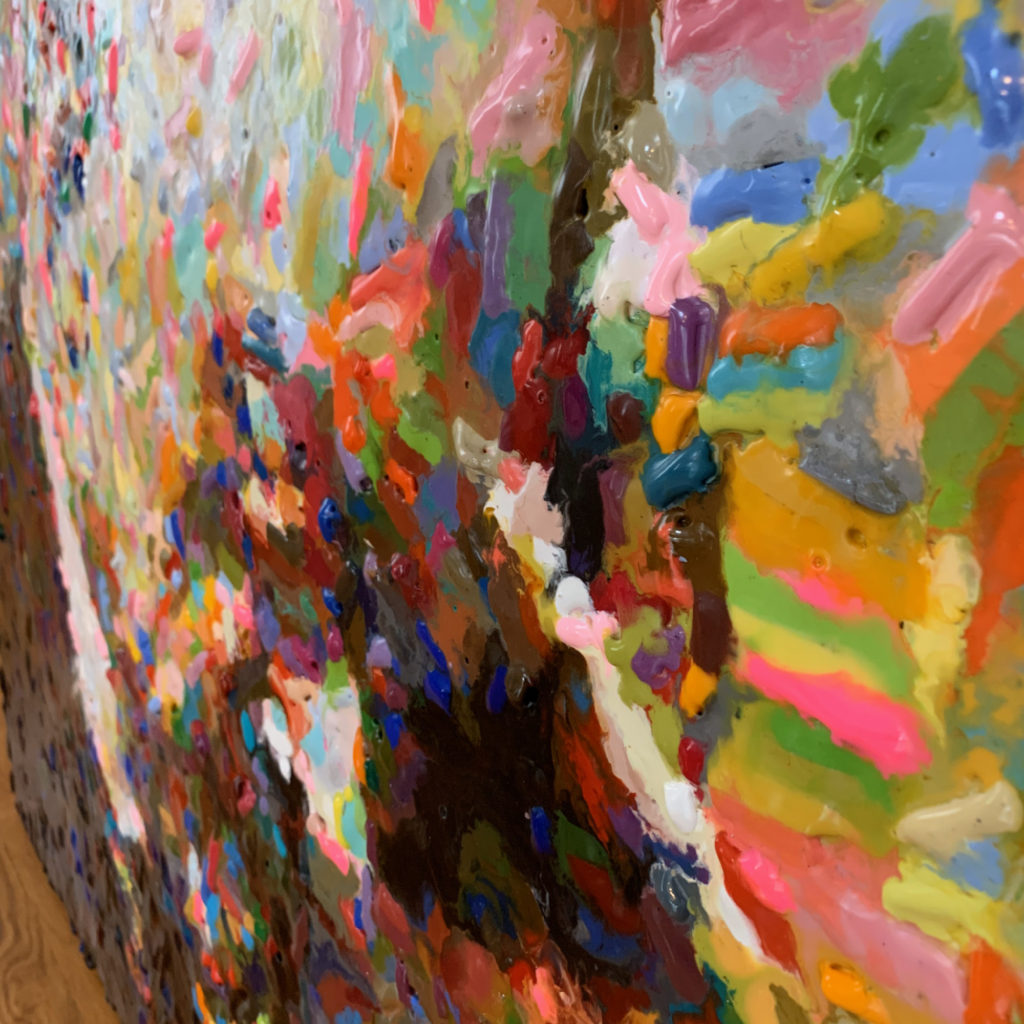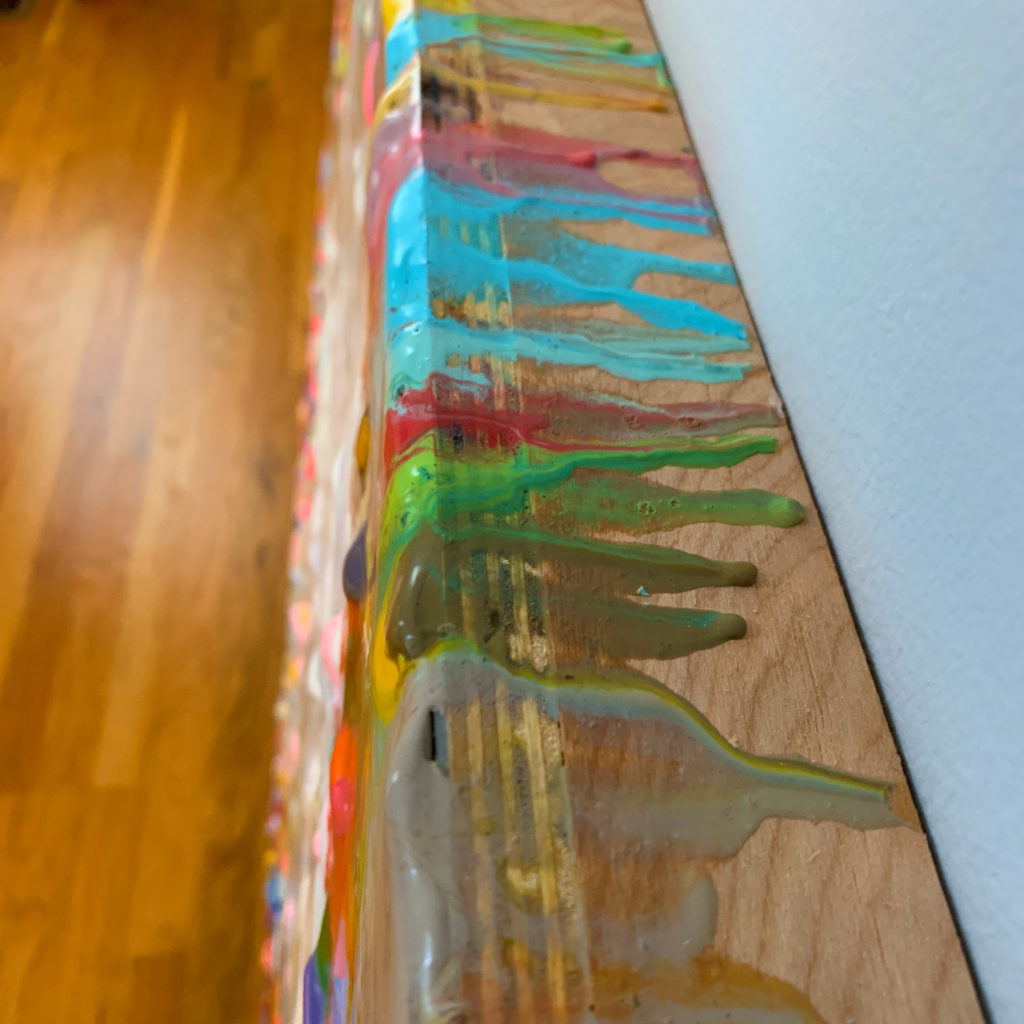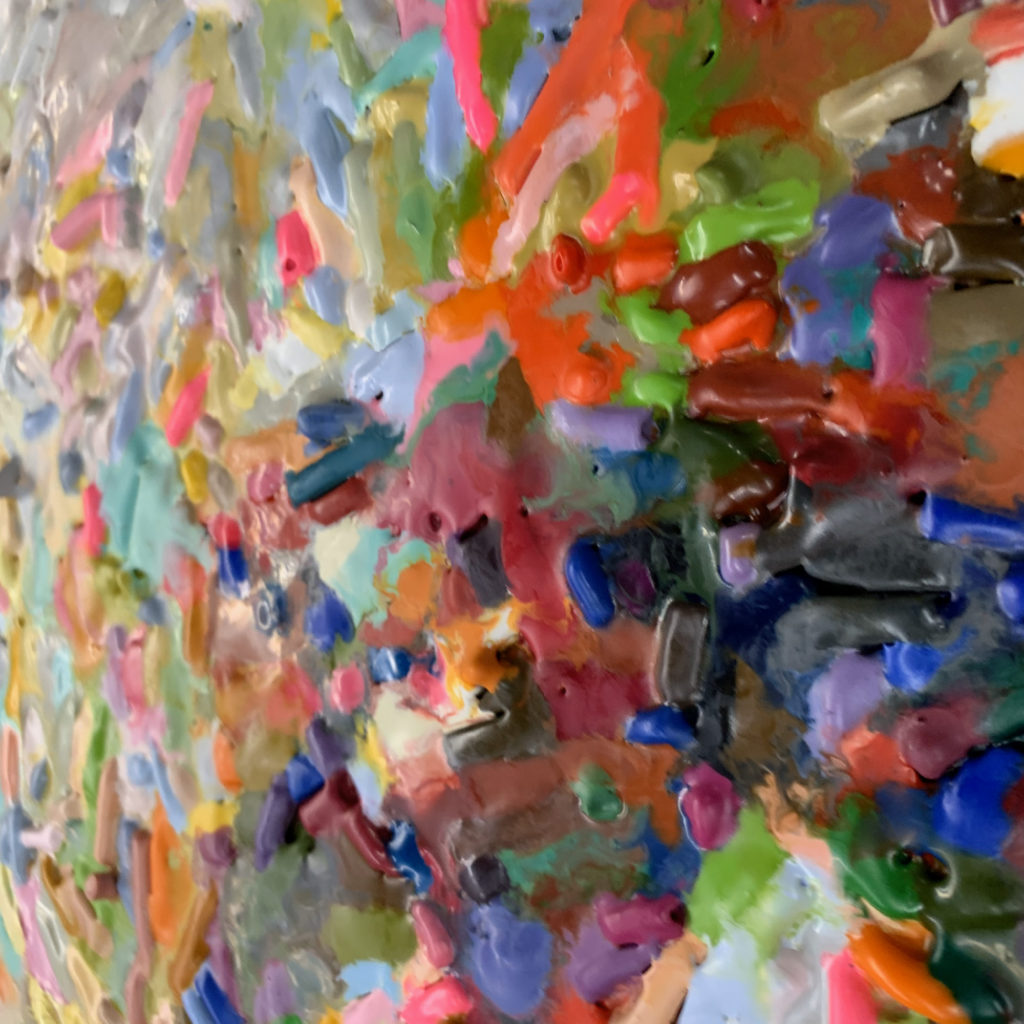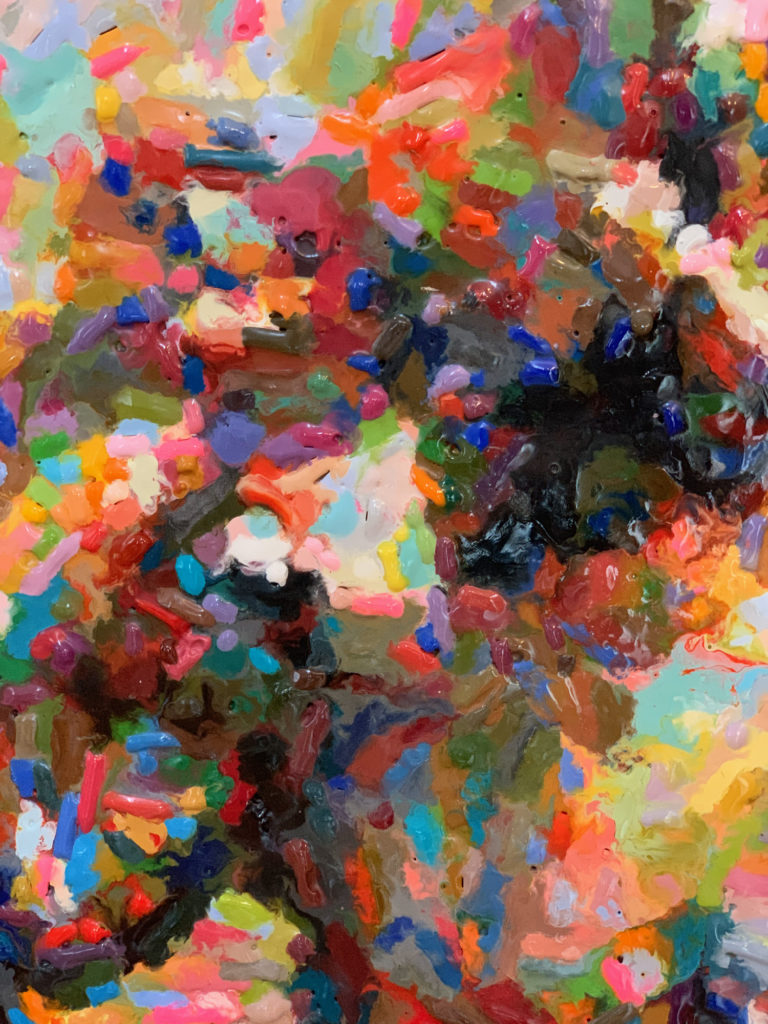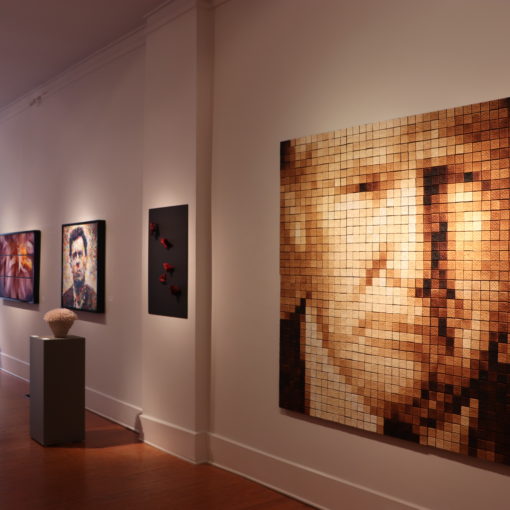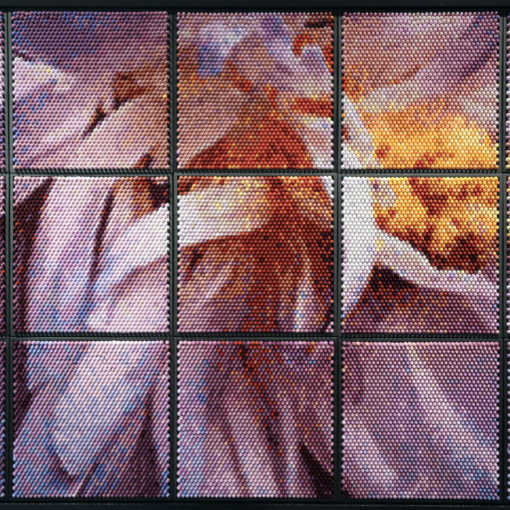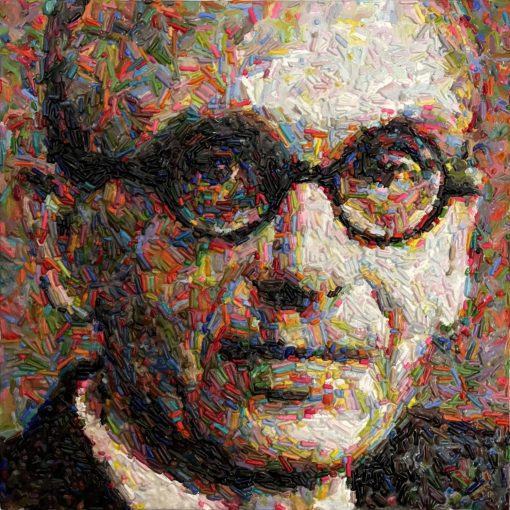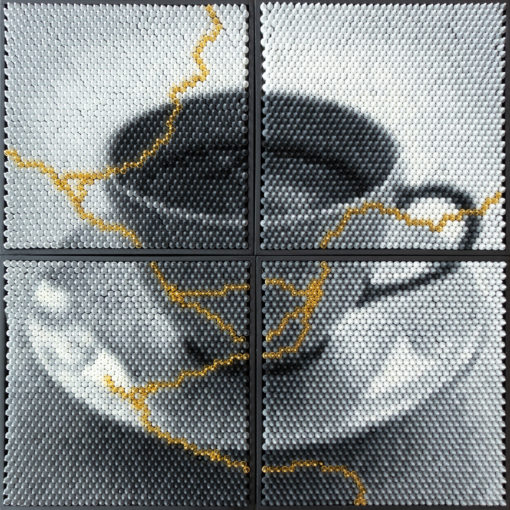David Hilbert (Mathematician Series) –36×36”
Melted hand cast encaustic crayons
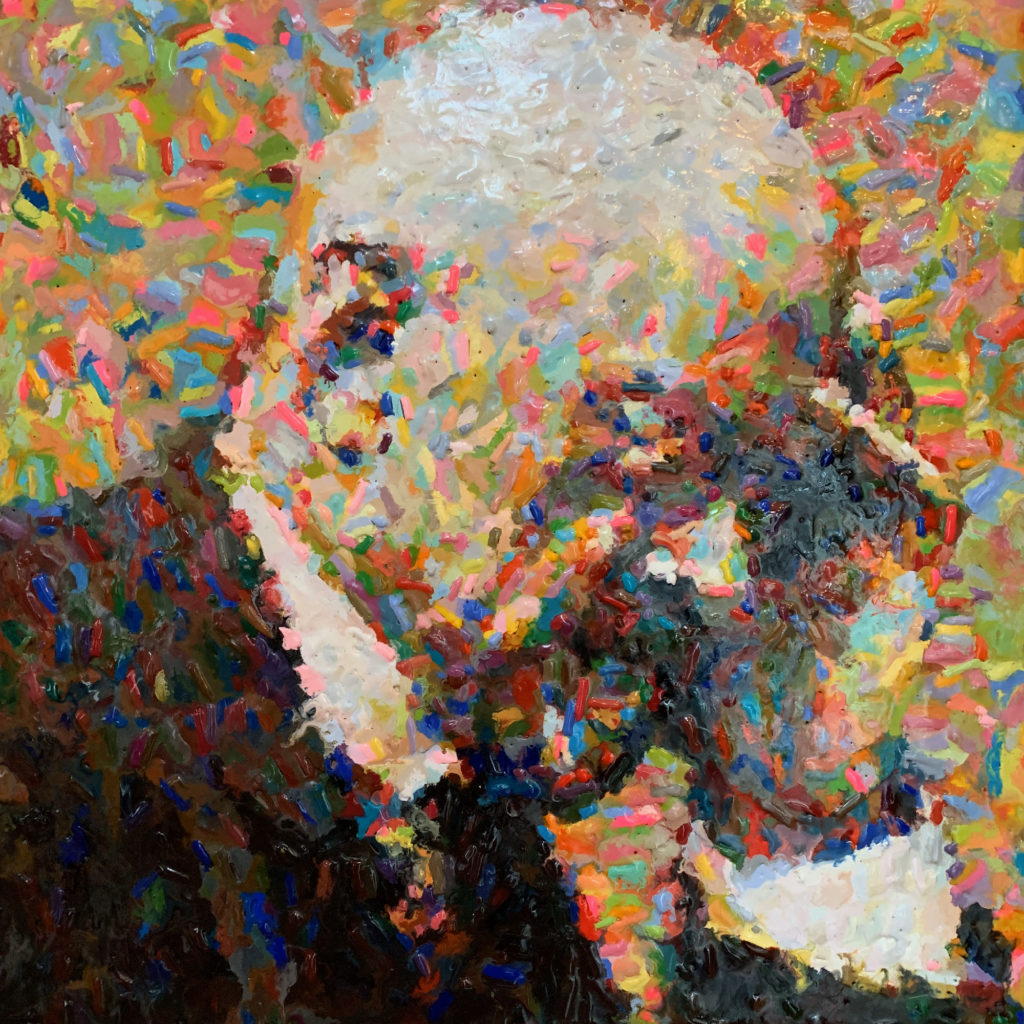
David Hilbert (1862-1943) was born in Prussia in what is today the city of Kaliningrad, Russia. His mother indulged in math and astronomy as hobbies, and this influence guided David’s career path. After attending college and teaching at the university in his hometown, he was thrilled to be hired at the University of Göttingen, which was at that time one of the top universities in the world in mathematics. Remaining there for the remainder of his teaching career, he collaborated with the renowned mathematicians of his time and influenced many students who went on to shine in the twentieth century.
Hilbert was a pure as opposed to an applied mathematician. Euclid, the father of geometry, established rules about geometry such as “things which are equal to the same thing are also equal to one another,” and “the whole is greater than the part.” Hilbert went one step further and reworked Euclid’s ten rules into his own famous twenty axioms, which function more elegantly in both two- and three-dimensional geometry.
After conceiving of several conundrums that mathematicians had yet to address, Hilbert presented these twenty-three problems to the math community, and people eagerly accepted the challenge and solved many of them. However, one hundred and twenty years later, some of the problems have yet to be solved, such as the Riemann Hypothesis and the problem of the topology of algebraic curves and surfaces. He was a genius far ahead of his time. According to Wikipedia, 53 math terms, concepts, and theories have been named for him.
Famously, Hilbert asserted that “physics is actually too hard for physicists.” He thought that if physicists were more versed in pure math, physics problems would be easier to tackle. One of his most well-known namesakes, Hilbert Space, takes vector algebra and calculus to new heights by explaining how they work in an infinite number of dimensions. The field of quantum mechanics (the study of how nature behaves on an atomic or smaller level) relies heavily on the concept of Hilbert Space. In part, we have David Hilbert to thank for our cell phones, computers, MRIs, lasers, and GPS.
Hilbert lived to see the University’s math program gutted as the Nazis swept into power. Colleagues and students who were Jewish or had married into Jewish families were purged from the roster and forced to seek safety in countries such as the United States and Canada. This shrank his friend circle significantly, and when he passed away, very few were present at his funeral. His lifelong scientific goal/motto was engraved on his grave in Göttingen. “Wir müssen wissen, wir werden wissen!”: We must know, we will know!
